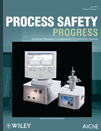
PROCESS SAFETY PROGRESS
Scope & Guideline
Fostering excellence in safety and risk management.
Introduction
Aims and Scopes
- Process Safety Management (PSM):
The journal emphasizes the principles and practices of process safety management, exploring frameworks, tools, and strategies to mitigate risks associated with chemical processes. - Risk Assessment and Analysis:
There is a strong focus on methodologies for risk assessment, including quantitative risk analysis, layers of protection analysis (LOPA), and bowtie analysis, to identify and manage hazards effectively. - Human Factors and Safety Culture:
Research addressing the human aspects of safety, including human error analysis, organizational safety culture, and behavioral safety programs, is prevalent, highlighting the importance of human factors in maintaining safety. - Emerging Technologies in Safety:
The journal explores the integration of emerging technologies such as artificial intelligence, machine learning, and digital twin technology in enhancing process safety and risk management. - Accident Investigation and Lessons Learned:
Many studies focus on analyzing past accidents and incidents to derive lessons learned, aiming to improve safety practices and prevent future occurrences. - Environmental and Regulatory Considerations:
Research often addresses environmental impacts of process safety incidents and compliance with regulatory standards, reflecting the increasing importance of sustainability and governance in the industry. - Sector-Specific Safety Issues:
The journal covers safety challenges specific to various sectors, including oil and gas, chemical manufacturing, and mining, providing tailored insights and solutions.
Trending and Emerging
- Integration of Artificial Intelligence and Machine Learning:
There is a growing interest in leveraging AI and machine learning technologies for process safety assessments, predictive analytics, and enhancing decision-making capabilities in safety management. - Sustainability and Environmental Safety:
With increasing concerns about environmental impacts, research focusing on sustainability practices and their integration into process safety management is on the rise, emphasizing the need for environmentally responsible operations. - Advanced Data Analytics for Safety Improvement:
The use of big data and advanced analytics to improve safety outcomes, including predictive modeling and real-time monitoring of safety parameters, has gained significant traction in recent publications. - Cybersecurity in Process Safety:
As digital technologies become more prevalent in industrial environments, the intersection of cybersecurity and process safety is emerging as a critical area of research to address vulnerabilities in safety systems. - Human-Centric Safety Approaches:
There is an increasing focus on human-centric safety approaches, including the study of human factors, safety culture, and decision-making processes, to enhance overall safety performance. - Resilience Engineering:
Research is trending towards resilience engineering principles, which emphasize the ability of organizations to anticipate, adapt to, and recover from safety incidents, reflecting a proactive approach to safety management.
Declining or Waning
- Conventional Hazard Identification Techniques:
Traditional methods of hazard identification, such as HAZOP (Hazard and Operability Studies), are being supplemented or replaced by more advanced and integrated approaches, leading to a decrease in standalone publications on these conventional techniques. - Focus on Physical Safety Mechanisms:
There has been a noticeable decline in research centered solely on physical safety mechanisms (e.g., pressure relief systems) without the integration of broader safety management systems or human factors. - Generalized Risk Assessment Methods:
As the field matures, there is a move away from generalized risk assessment approaches towards more specialized and context-specific methodologies, resulting in fewer publications on broad risk assessment strategies. - Static Safety Regulations:
The emphasis on static safety regulations has waned in favor of dynamic and adaptive safety management practices, reflecting the industry's shift towards continuous improvement and real-time risk management. - Historical Case Studies:
While historical case studies remain valuable, there is a declining trend in their prevalence as researchers focus more on contemporary issues and predictive analyses rather than retrospective evaluations.
Similar Journals
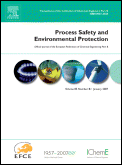
PROCESS SAFETY AND ENVIRONMENTAL PROTECTION
Pioneering research that protects our planet and its people.PROCESS SAFETY AND ENVIRONMENTAL PROTECTION, published by Elsevier, is a premier academic journal dedicated to advancing the fields of chemical engineering, environmental science, and safety management. With an impressive impact factor, this esteemed journal undergoes a meticulous peer-review process and serves as a vital platform for researchers, professionals, and students seeking to disseminate cutting-edge research and innovative practices. Submissions are welcome in a wide scope of topics related to safety, risk, reliability, and environmental engineering, demonstrating its influence as a Q1 journal across multiple categories, including Environmental Chemistry and Safety, Risk, Reliability and Quality. By providing a rigorous analysis of current challenges and solutions in the domain since its inception in 1990, it continues to foster interdisciplinary collaboration and practical applications in the United Kingdom and beyond. With the journal not currently offering Open Access options, subscribers gain exclusive access to pivotal insights that shape industry standards and drive advancements in sustainable practices.
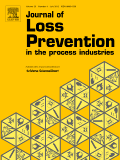
JOURNAL OF LOSS PREVENTION IN THE PROCESS INDUSTRIES
Fostering a safer future in chemical and manufacturing engineering.The Journal of Loss Prevention in the Process Industries, published by Elsevier Science Ltd, stands as a vital platform for advancing knowledge and practice in risk management and safety within the fields of chemical engineering, industrial and manufacturing engineering, and beyond. With an H-Index reflecting significant scholarly influence, this journal features a diverse scope, addressing critical issues from process safety and reliability to innovative solutions for energy efficiency. Ranking in the second quartile (Q2) across several categories, including Control and Systems Engineering and Safety, Risk, Reliability and Quality, it highlights the interdisciplinary nature of loss prevention strategies. Researchers and professionals can access this journal through subscription, ensuring they stay at the forefront of developments from 1988 to 2024. As a hub of cutting-edge research, the journal not only aims to disseminate high-quality studies but also fosters a community dedicated to enhancing safety and operational excellence in process industries worldwide.

Mining Technology-Transactions of the Institutions of Mining and Metallurgy
Unveiling Cutting-edge Discoveries in GeologyMining Technology - Transactions of the Institutions of Mining and Metallurgy, published by SAGE Publications Inc., serves as a pivotal platform for disseminating cutting-edge research in the fields of mining and metallurgy. With an ISSN of 2572-6668 and E-ISSN 2572-6676, this esteemed journal has established a notable presence in the academic community, particularly in Geology (Q2) and Geotechnical Engineering and Engineering Geology (Q3) as of 2023. The journal boasts an impressive Scopus ranking, placing it among the top research outlets in its category with Earth and Planetary Sciences _ Geology ranked #170/321 and Geotechnical Engineering and Engineering Geology at #129/229. While it operates under a traditional access model, its dedication to the advancement of knowledge within the mining sector is evident through its converging themes from 2018 to 2024, emphasizing innovation, sustainability, and safety in mining practices. This journal is essential for researchers, professionals, and students seeking to stay at the forefront of developments in the mining industry.
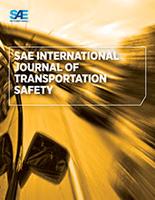
SAE International Journal of Transportation Safety
Enhancing Safety Through Rigorous ResearchSAE International Journal of Transportation Safety is a premier publication dedicated to advancing the field of transportation safety through rigorous research and analysis. Published by SAE International, this journal serves as a crucial platform for researchers and professionals aiming to enhance safety practices across various domains, including human factors, mechanical engineering, and safety research. With an ISSN of 2327-5626 and E-ISSN 2327-5634, the journal emphasizes the importance of empirical studies and best practices that address contemporary challenges in transportation safety. Although it operates under traditional subscription models, the journal is esteemed for its selective peer review process, ensuring the highest quality of published work. Currently positioned in the Q3 quartile across multiple categories in 2023, the journal is ranked within the lower percentiles of its field, indicating opportunities for growth and increasing visibility. With an audience that includes academic researchers, policy makers, and students, the SAE International Journal of Transportation Safety plays an essential role in shaping the future of safe transportation practices globally.

INTERNATIONAL JOURNAL OF RISK & SAFETY IN MEDICINE
Exploring the nexus of risk and medicine.INTERNATIONAL JOURNAL OF RISK & SAFETY IN MEDICINE, published by IOS Press, serves as an essential platform for advancing the understanding of risk and safety within the medical domain. With an ISSN of 0924-6479 and E-ISSN of 1878-6847, this journal has been dedicated to fostering critical discourse since its inception in 1990, reflecting a continuous commitment to the field through 2024. Positioned within the Q4 category in Health Policy and Q3 in Medicine (miscellaneous) and Public Health, Environmental and Occupational Health, the journal provides valuable insights, empirical research, and theoretical analyses that speak to the diverse challenges faced in medical safety and risk management. Although it operates under a subscription model, the journal remains a vital resource for researchers, healthcare professionals, and students alike, facilitating the exchange of innovative ideas and best practices in health risk assessment. With Scopus ranks indicating its role as a key contributor in its categories, the INTERNATIONAL JOURNAL OF RISK & SAFETY IN MEDICINE continues to shape the landscape of medical safety and policy discussions around the globe.
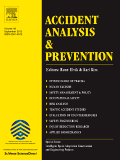
ACCIDENT ANALYSIS AND PREVENTION
Innovating Strategies for Accident PreventionACCIDENT ANALYSIS AND PREVENTION is a premier journal dedicated to the multidisciplinary exploration of the factors contributing to accidents and strategies for their prevention. Published by PERGAMON-ELSEVIER SCIENCE LTD in the United Kingdom, this esteemed journal has made significant strides since its inception in 1969, with ongoing publications until 2024. With a notable impact factor and recognition as a Q1 journal across multiple categories including Human Factors and Ergonomics, Law, and Public Health, it stands out in the field. Its Scopus rankings further underline its excellence, placing it within the top tiers of safety, risk, and reliability research. Researchers, professionals, and students are encouraged to engage with this journal to stay at the forefront of accident prevention methodologies and research advancements, fostering an environment of safety and risk assessment innovation.
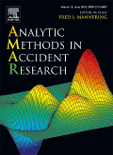
Analytic Methods in Accident Research
Exploring new frontiers in accident research for a safer tomorrow.Analytic Methods in Accident Research, published by ELSEVIER, is an esteemed journal dedicated to the rigorous exploration of methodologies in safety research and transportation studies. Established in 2014, the journal serves as a vital platform for researchers, practitioners, and policymakers focusing on innovative approaches to accident analysis, ultimately aiming to enhance public safety and improve transportation systems. With an impressive impact factor reflected in its Q1 rankings in both Safety Research and Transportation, the journal ranks #1 out of 109 in Safety Research and #2 out of 141 in Transportation, showcasing its influential position within these fields. The journal emphasizes open access to a range of articles, making cutting-edge research accessible to a diverse audience. As it converges toward its 2024 milestone, Analytic Methods in Accident Research continues to play a crucial role in fostering innovative findings and solutions, making it an indispensable resource for any scholar or professional engaged in safety and transportation research.
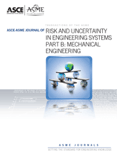
ASCE-ASME Journal of Risk and Uncertainty in Engineering Systems Part B-Mechanical Engineering
Navigating the Complexities of Risk in Engineering SystemsASCE-ASME Journal of Risk and Uncertainty in Engineering Systems Part B-Mechanical Engineering, published by the reputable ASME, is a leading platform dedicated to advancing knowledge in the field of mechanical engineering with a particular emphasis on risk assessment and uncertainty analysis. With an ISSN of 2332-9017 and an E-ISSN of 2332-9025, this journal has established itself as a significant contributor to ongoing research in safety, risk, and reliability, consistently ranking in the Q2 quartile for Mechanical Engineering as well as Safety Research categories. As evidenced by its impressive Scopus rankings—including a notable 80th percentile in Safety Research—this journal fosters high-quality research that informs engineering practices and enhances safety protocols. Operating under a traditional access model, it aims to provide researchers, professionals, and students with essential insights and methodologies to address contemporary challenges in engineering systems. Each contribution reflects an aim to bridge theory and application, thus making the journal an invaluable resource for stakeholders striving for excellence in mechanical engineering and safety management.
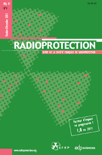
RADIOPROTECTION
Unveiling the science behind radiation and its impact on society.RADIOPROTECTION, published by EDP SCIENCES S A, stands as a pivotal journal in the multidisciplinary fields of Nuclear Energy, Public Health, and Environmental Safety. With an ISSN of 0033-8451 and an E-ISSN of 1769-700X, this journal delves into the crucial aspects of radiation protection and its interactions with health and environment, providing a platform for researchers and professionals to disseminate their findings and insights. Despite being classified in the Q4 quartile for Health, Toxicology and Mutagenesis in 2023, its Q3 status in prestigious categories such as Nuclear Energy and Engineering, and Public Health, underscores its relevance in contemporary academic discourse. The journal continues to expand its cachet with converged years of publication from 1977 to 1981 and 1988 to 2024, ensuring a rich history of scholarly contributions. Access options for interested readers include traditional subscriptions, allowing for comprehensive engagement with a broad range of topics surrounding safety, sustainability, and risk management. Whether you are a researcher, professional, or student, RADIOPROTECTION serves as an essential resource for expanding understanding and fostering innovation within its field.
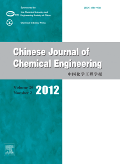
Chinese Journal of Chemical Engineering
Advancing Chemical Innovation for a Sustainable FutureChinese Journal of Chemical Engineering, published by CHEMICAL INDUSTRY PRESS CO LTD, is a premier academic journal dedicated to advancing the field of chemical engineering and related disciplines. With a strong emphasis on innovative research and practical applications, the journal spans a wide range of topics including biochemistry, environmental engineering, and general chemistry. Boasting a commendable impact factor and a consistent presence in Q2 quartiles across multiple categories, it ranks impressively in Scopus, notably positioned in the top percentile of its fields, enhancing its credibility and reach among the scientific community. Published continuously since 1993 and converging towards its 2024 goals, the journal remains committed to fostering sustainable and impactful research. Researchers, professionals, and students alike will find invaluable resources and cutting-edge insights, making the Chinese Journal of Chemical Engineering an essential platform for disseminating pivotal work in the realms of chemical and environmental sciences.